Greetings everyone! Slim It thus far has been an exciting experience for me and for both of my teams! I have been blessed with having not only one but two teams due to the high number of requests from individuals wanting to join this year. I will highlight my Monday and Friday team this week. Be sure to look out for my blog about my Tuesday and Thursday team in the near future.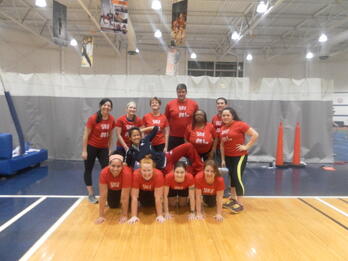
My M/F team is doing a great job with the exercises that I have been giving them and familiarizing themselves with the structure of our workouts. A few of them have worked with me before in previous programs or through personal training. It is nice to see familiar faces and at the same time getting to know other members. They have adapted well to other trainers and continued to attend those sessions. Many have experienced soreness, which is common during the beginning weeks of a new program. We are currently thinking of a team name and plan to have one by the end of our third week.
The weather hasn’t been cooperating as much as we’d like; therefore, some members were unable to come in. Overall, the program has been challenging in many ways and I plan to continue to motivate them to incorporate a healthier lifestyle and to reach their Slim It goals!
Here’s an interview with one of my team members:
1. Share your story or a bit about yourself in a few sentences:
My name is Jenna Looney. I am 29 years old and have lived in downtown Indy for 1 year. I was a special education teacher and I recently switched to the field of educational technology. In this role I am far less mobile and active at work, but I LOVE the job. I miss the interactions with kids and being active throughout the day. I love travel, Mexican food, reading, being outside, the Pacers, rehabbing furniture, music, dancing, and overall FUN!
I have watched the scale go up and down over the past 10 years in some pretty dramatic swings. I am looking to find a realistic, healthy, maintainable weight and stick to it. I found I felt too busy for exercise or for healthy eating, but I realize it will only get more complicated and busier if I have a family. I want to get it under control now and stop making excuses. I worked with Crystal for about three months prior to starting Slim It and have had positive and exciting results in combination with diet*. I am also currently in the run-walk group for the NIFS Mini Marathon Training Program.
2. NIFS Programs you’ve participated in:
I am a member at NIFS and participated in the Mini Marathon training last year and am doing it again this year. I also started using personal training sessions.
3. Why did you join this program?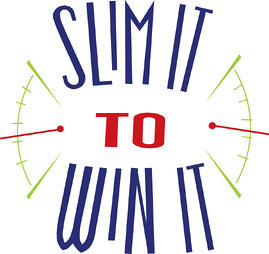
I enrolled in Slim It to Win It for three reasons:
- Groups motivate me to stay strong and committed.
- I could pick to work with Crystal and I felt she would bring a challenge, yet she knows me from training so I am comfortable with asking her questions, etc.
- I want to continue to work toward my goals of better health and weight loss—I want to look good by my 30th birthday.
4. Something you’ve enjoyed:
I have been surprised with how exercise really does help relieve soreness—but goodness, it’s hard to force yourself to exercise when you are incredibly sore from a tough workout.
5. Something you have learned or something that surprised you:
Something I have enjoyed: In my one-on-one sessions with Crystal I have loved (and sort of hated) the metabolic ball throws and slams. I love them because I feel the burn and my heart races, so that also makes me hate them. But ultimately I know these bring results, so I love them.
We have incorporated a variation of these metabolic exercises already in our group training and I look forward to more—oh gosh! I cannot believe I just typed that!
6. Favorite exercise from one of the workouts:
BOSU mountain climbers. I don’t really love these because they feel a tad like push-ups, but I guess I like that I have progressed to be able to use the BOSU in mountain climbers and hold it for extended periods while in the push-up/plank position. I knew I was getting stronger when I could do this because it almost killed me the first time I tried it. I like seeing myself get stronger.
7. What accomplishments you have achieved during your training?
Since starting training with Crystal prior to Slim It, I’ve lost 6.5% body fat, gained 6.9 pounds of lean muscle, and have gone down a rating for body fat in three months*. I am excited to continue to decrease my body fat and see less jiggle and wiggle in my gut.
8. What struggles have you encountered? Tips you have learned along the way?
Challenges: When I’ve had a bad day or have had a great day worth celebrating, I find it hard not to want to go out to eat and eat and drink to celebrate or to make myself feel better. To combat this: If I come to the gym I feel better when I’m done. The biggest battle is making myself go—once I’m in the gym it’s rare that I don’t leave feeling better and fulfilled. I’m not perfect at this, but it’s better than it was...
9. How do you stay motivated?
By not quitting if I slip up in my diet, and pushing through excuses and reasons to skip a workout. Also remaining focused on my next goal, 10 more pounds...
10. Any other thoughts?
I love the staff at NIFS. They’re all awesome. I love Crystal and want to thank her for supporting me and helping me make the progress I have. I’m excited to continue my progress!
Training with a group is a proven strategy for sticking with a workout routine and is more economical than one-on-one training. If you are interested in trying a small group or large group training session contact Tony Maloney today to get started!
*Weight loss claims and/or individual results vary and are not guaranteed.

This blog was written by Crystal Belen, NIFS Heath Fitness Instructor. Learn more about the NIFS bloggers.
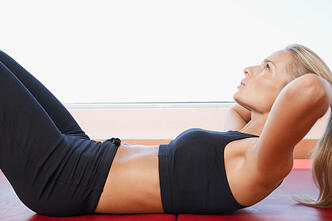 The ideal, desired image of six-pack abs plastered on the cover of every magazine tells us so…right? To get where you want to be, you will have to have a game plan. Ten thousand crunches per day should do the trick, right? Well not necessarily.
The ideal, desired image of six-pack abs plastered on the cover of every magazine tells us so…right? To get where you want to be, you will have to have a game plan. Ten thousand crunches per day should do the trick, right? Well not necessarily.


 workouts, and amazing attitudes. These characteristics fit right into the formula for success.
workouts, and amazing attitudes. These characteristics fit right into the formula for success. fun!
fun!





 a hefty task. If this is your first time training for a half marathon, and the thought of running 10-plus miles seems a bit daunting, you are not alone.
a hefty task. If this is your first time training for a half marathon, and the thought of running 10-plus miles seems a bit daunting, you are not alone. Sometimes when I am running by myself, a little voice inside my head starts to doubt that I can finish the long run I set out to complete. When I bring a friend along with me, she encourages me the entire way…even if she doesn't know it! Sometimes, just knowing someone else is running with me really helps me push through.
Sometimes when I am running by myself, a little voice inside my head starts to doubt that I can finish the long run I set out to complete. When I bring a friend along with me, she encourages me the entire way…even if she doesn't know it! Sometimes, just knowing someone else is running with me really helps me push through.

 you are targeting).
you are targeting).
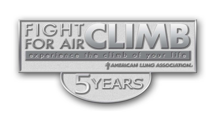 meeting or were struck with a sudden burst of energy. Your legs probably began to tighten up and burn a little. Your heart rate suddenly climbs and you begin to consume more and more oxygen with every step. You have to, your body is craving oxygen to supply a rich blood flow to the working muscles so you can get to that meeting on time.
meeting or were struck with a sudden burst of energy. Your legs probably began to tighten up and burn a little. Your heart rate suddenly climbs and you begin to consume more and more oxygen with every step. You have to, your body is craving oxygen to supply a rich blood flow to the working muscles so you can get to that meeting on time.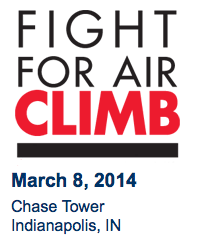
 big 4-0. Some sources claim that your metabolism can decrease by up to 5% every 10 years once you hit 40. That means you have to eat fewer and fewer calories every year just to maintain the same weight.
big 4-0. Some sources claim that your metabolism can decrease by up to 5% every 10 years once you hit 40. That means you have to eat fewer and fewer calories every year just to maintain the same weight.